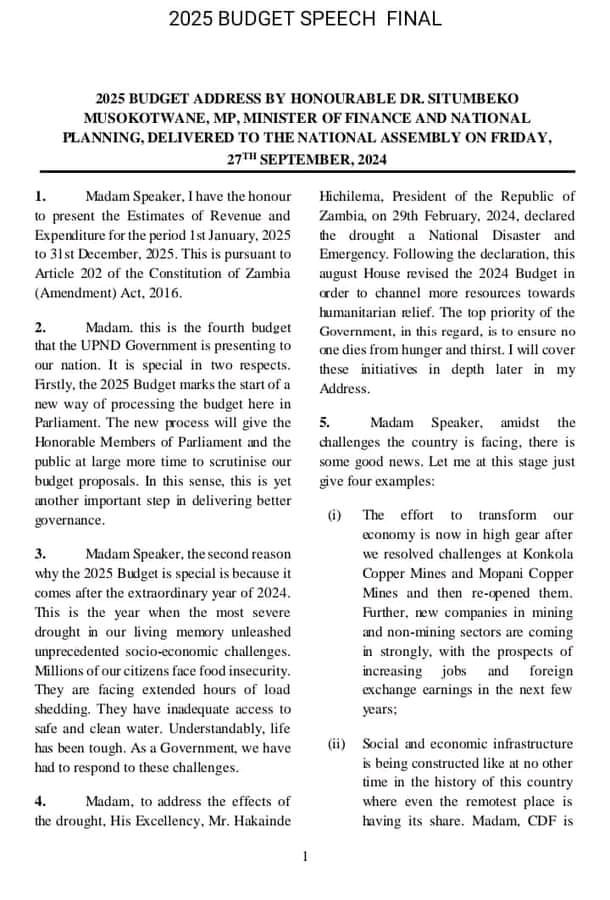2025 NATIONAL BUDGET, A MUST READ SIMPLIFIED ANALYSIS
by Yona Musukwa
Now that the Estimates of Revenue and Expenditure aka National Budget for 2025 has been presented to parliament, let me make a few observations.
A more cogent analysis of the content of the budget will be done later.
Comrades, even if your grasp of matters public finance could be standing on wobbly legs and staggering, at the very minimum, get a few basics right as you discuss the budget.
1. The National Budget and the Budget Speech are not one and the same thing. The Budget Speech is a document in which the Minister of Finance presents the National Budget to Parliament while highlighting salient points.
You read the 2025 budget speech, you go round boasting that you have read the 2025 budget. Nix, you have just read highlights.
2. There is a common tendency to quote, even celebrate, wishful figures in the national budget as the actual reality. A budget is nothing more than a wish list. The National Budget is the government’s wish list that may happen or may not happen. Historically, only about forty to fifty percent of the budget get to be actualised.
For example, what the Minister presents in the national budget is the targeted GDP or Inflation for the year. It doesn’t mean it will happen. Don’t present these figures as actuals.
3. Economic Growth and Economic Development doesn’t mean the same thing. Economic growth deals with quantitative output while economic development is qualitative. Don’t use these terms interchangeably.
4. GDP is also different from GDP Per Capita. It is very common among commentators and analysts to confuse the two, making wrong comparisons and conclusions.
GDP measures a country’s economic output, and depends on several variables, while GDP per Capita looks at a country’s economic growth vis a vis population growth.
It is also very common to hear some sections of the commentariat say “Zambia’s low GDP is due to a small population.” That is ignorance pro max. It is a question of productivity.
Singapore has a very small population, above five million people, while Zambia has about twenty million people. Yet, according to the World Bank 2022 statistics, Singapore’s GDP was $466.8 billion while Zambia’s GDP was $29.16 billion, about sixteen times bigger than Zambia. If you calculate the GDP per Capita (Singapore is $82,807.63 Zambia is $1,456.90) a Singaporean is fifty six times more productive than a Zambian.
If the people of Singapore had the same low levels of productivity (unfettered productive forces) like Zambia, their GDP would be around $8 billion. It is productivity, not population size, that matters the most.
That is why the World Bank uses GDP per Capita Income thresholds to classify countries in 3 income levels: Low, Middle and High Income Countries. (A topic for another day)
5. Another confusion is how Inflation and the Cost of Living are used interchangeably. Even though Inflation and Cost of Living are close relatives, they are not the same.
Inflation measures the rate at which prices are increasing. In other words, the decrease in the buying power of the kwacha. It consists of food and non food items. While the Cost of Living measures the change in price, up and down, of basic necessities to make a living.
Take note also that households may interact with inflation differently, not the official inflation rate, depending on the levels of income.
For example, when we say Inflation is at 15%, food inflation may be around 22% and non food items at 8%. Ba Kabulonga, because they have a large chunk of disposable income, maybe experiencing inflation, on average, around 15%. But ba mwana shabulila with income below the cost of living, all their income is spent on food, their interaction with inflation will only be food inflation at 22%.
Class Dismissed!.

